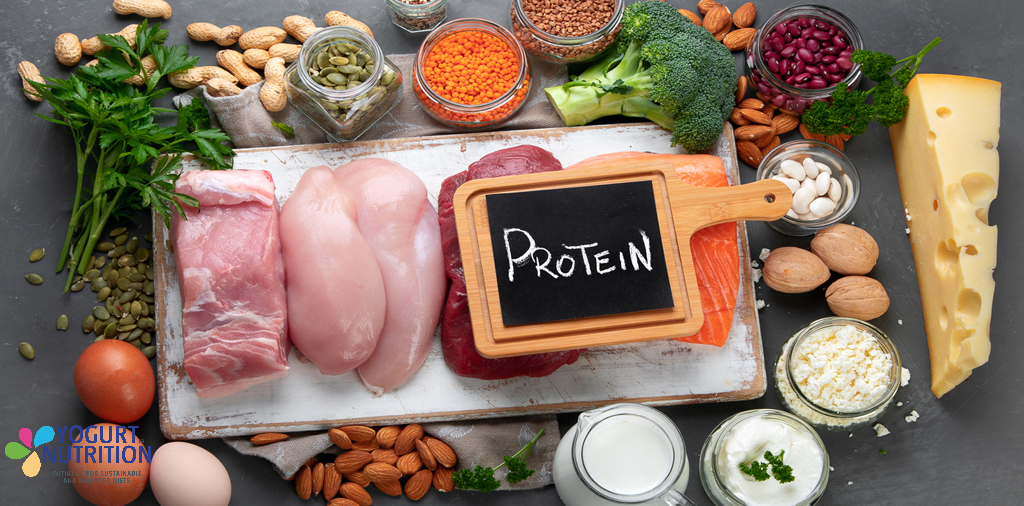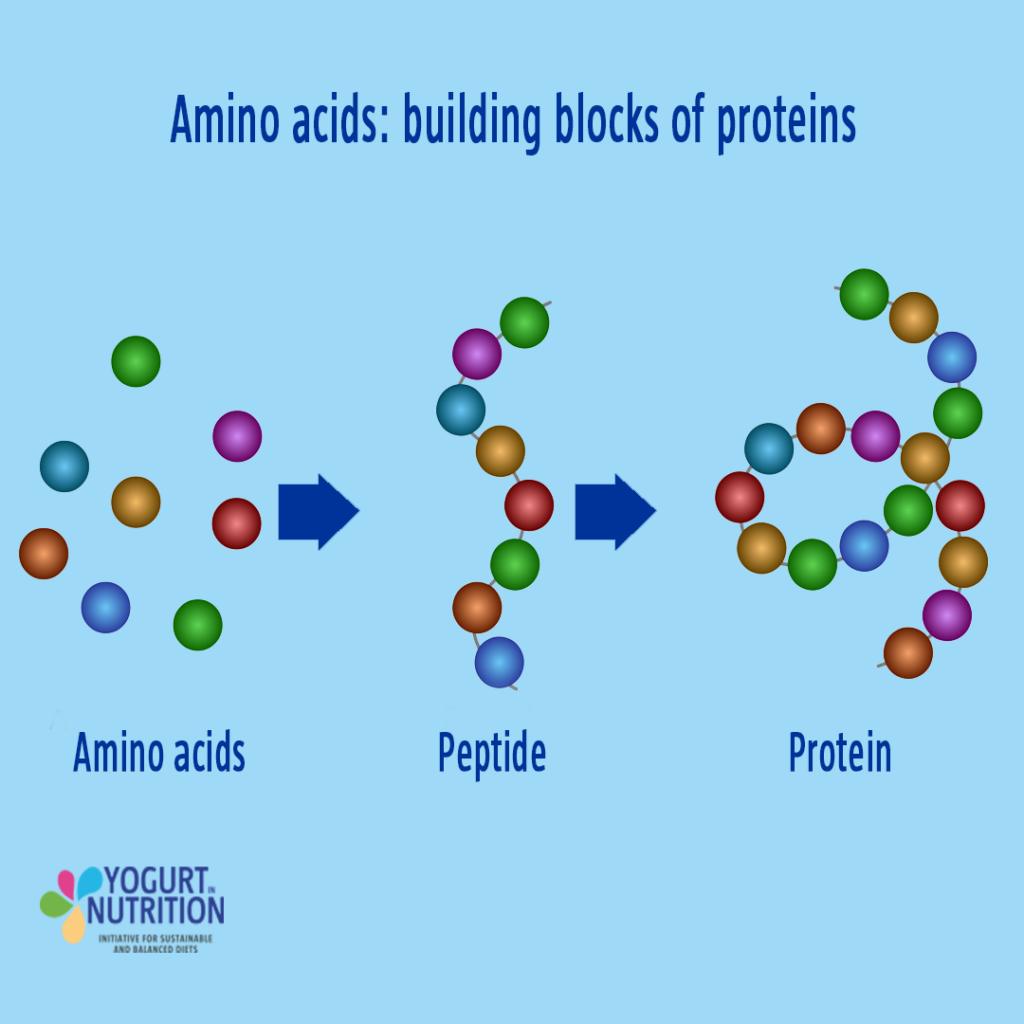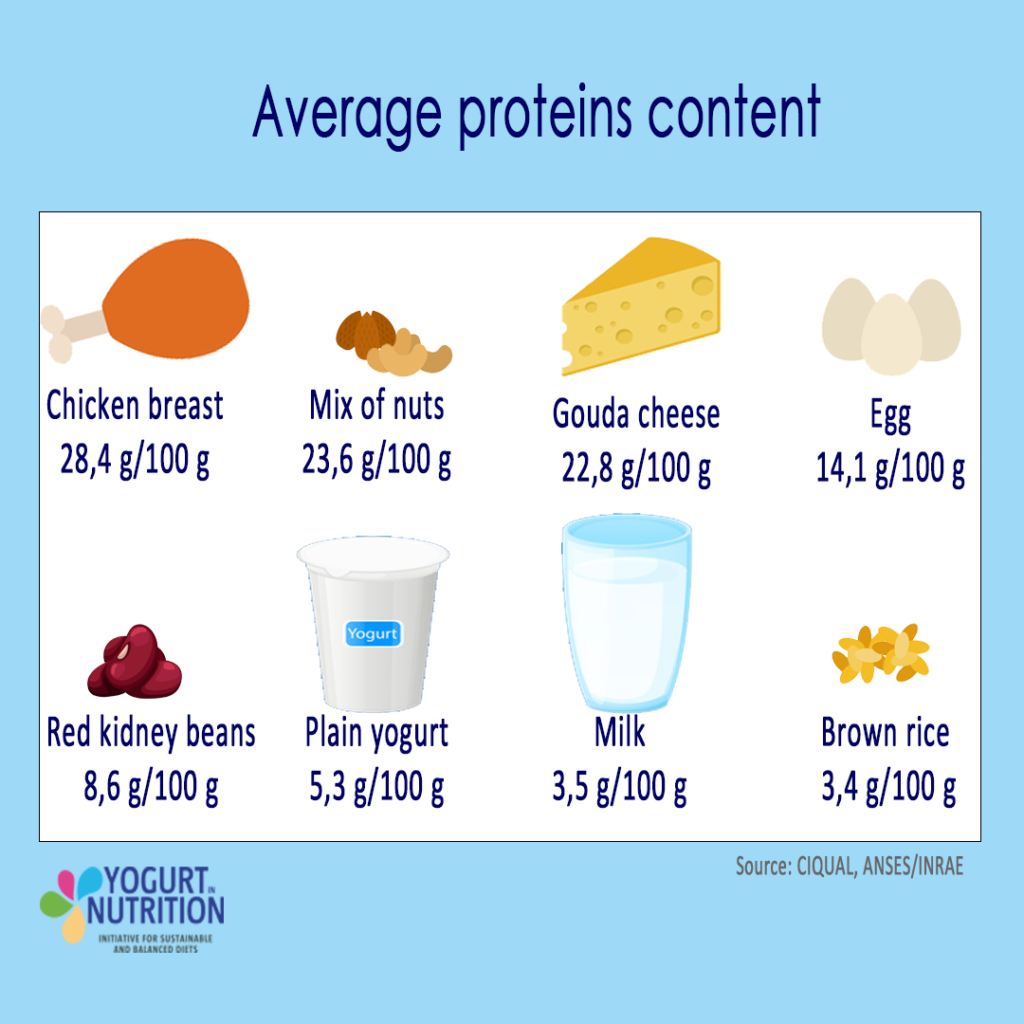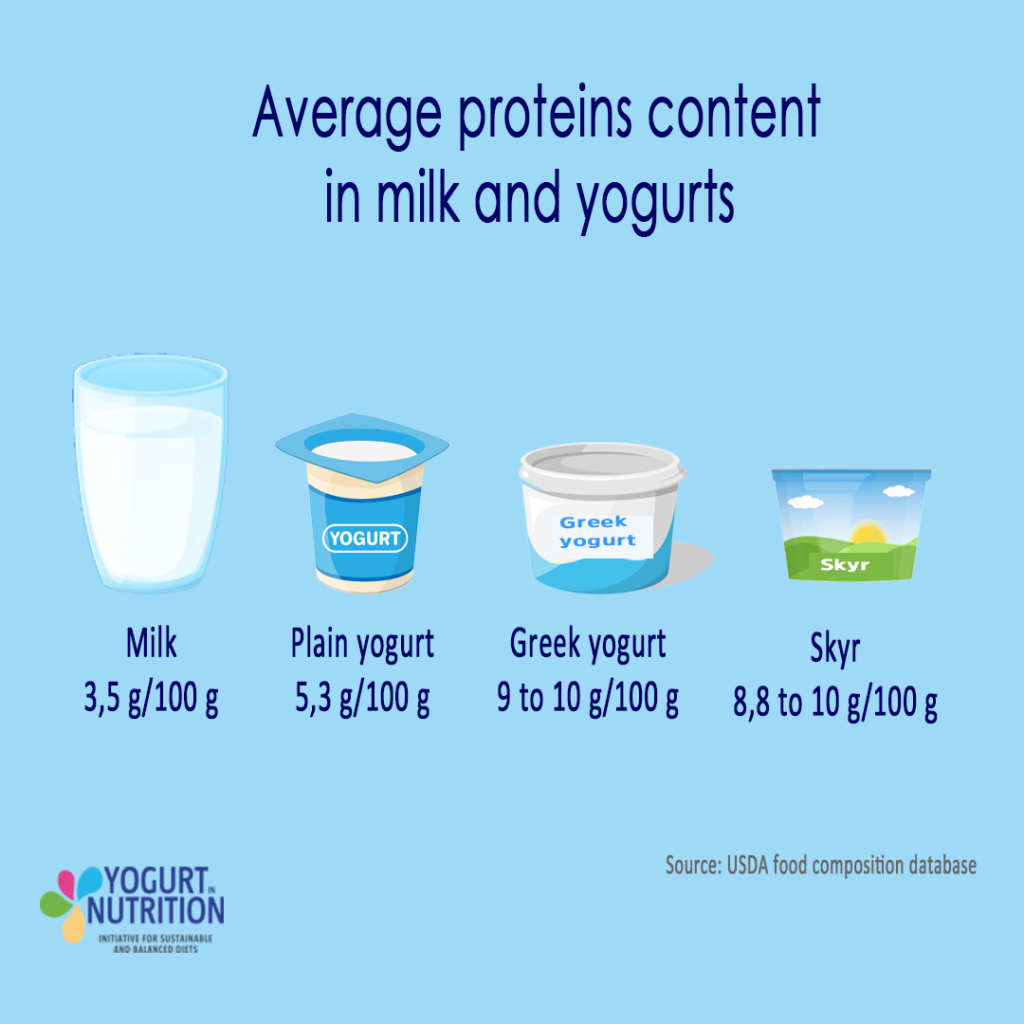Each month, we’ll share with you the key data about one specific nutrient. For this first edition, let’s focus on dairy proteins. Proteins constitute a diverse family of compounds with both functional and structural roles in the body.
Functionally, proteins serve as enzymes, hormones, contributors to immunity, and agents for transport. Structurally, they play a role within cell membranes and intracellular organelles.
Proteins and amino acids
Proteins can exist as long chains, linear or branched, folded or unfolded, and spatially organized or unstructured. Amino acids are the fundamental building blocks of proteins. While there are numerous amino acids, the human body utilizes only twenty, known as “proteogenic” amino acids, to construct proteins. Among these, 11 can be synthesized by the human body, while the remaining 9 are considered essential, as the body cannot produce them in sufficient quantities and thus must acquire them through the diet. The amino acid composition of proteins is a critical factor when evaluating the protein quality of a diet. Additionally, amino acids, being nitrogen-rich, serve as the primary source of this essential element in our bodies.
Dietary Sources of Proteins
The quality of dietary protein sources is determined by their ability to meet protein and essential amino acid requirements.
- Animal Proteins: Found in milk and dairy products, eggs, fish, and meat, animal proteins are relatively rich in proteins and contain all essential amino acids. Animal proteins are generally slightly more digestible than plant proteins.
- Vegetable Proteins: Mainly sourced from cereals and legumes, vegetable proteins may lack certain essential amino acids. For example, cereals may lack lysine, and legumes may lack sulfur-containing amino acids. To achieve a balanced amino acid profile from plant proteins, combining different plant foods is necessary. This can involve pairing legume seeds (lentils, beans, peas, etc.) with cereals (rice, wheat, corn, etc.).
Understanding the roles of proteins and the importance of amino acids in the diet helps in formulating nutritionally balanced and complete dietary plans that cater to the body’s functional and structural needs.
Assessment of Protein Quality
Several criteria are employed to assess protein quality:
- The Biological Value (BV) estimates tissue protein utilization in the body. The higher the BV, the better the protein utilization.
- The Net Protein Utilization (NPU) represents the amount of protein actually absorbed by the body.
- The Protein Efficiency Ratio (PER) ranks proteins in relation to each other. The higher the PER, the higher the quality of the protein.
- The PD-CAAS (Protein Digestibility Corrected Amino Acid Score) is a chemical index corrected for digestibility. It measures protein quality based on the availability of essential amino acids and digestibility. It serves as an index of protein source quality or dietary coverage of essential amino acid requirements.
- The DIAAS (Digestible Indispensable Amino Acid Score) is gradually replacing the PD-CAAS index. It assesses the quality of proteins by considering their composition in essential amino acids and their bioavailability, taking into account individual digestibility in the small intestine.
Dairy proteins generally demonstrate good quality across these different markers.
 Nutritional requirements for proteins
Nutritional requirements for proteins
The Recommended Dietary Allowance (RDA) for protein is approximately 0.8 grams of protein per kilogram of body weight, with the reference range for adults being 10 to 20% of Total Energy Intake. This translates to a daily protein requirement estimate of:
- For Men (Total Energy Intake of 2600 kcal) 65g to 130g/day
- For Women (Total Energy Intake of 2100 kcal): 52.5g to 105g/day
Protein requirements become especially crucial during “critical” periods such as growth, pregnancy, or post-surgery. Beyond these periods, maintaining an adequate protein intake is essential throughout life to preserve muscle mass and support various bodily functions.
About Yogurt and Dairy Proteins
Dairy and yogurt proteins stand out due to their high nutritional value, comparable to other animal proteins. Their good digestibility and rich content of essential amino acids contribute to their effectiveness. Additionally, yogurt proteins benefit from milk coagulation, leading to the hydrolysis of certain proteins, particularly caseins, enhancing their intestinal absorption with a digestibility ranging from 95% to 97%. The fermentation process further enhances digestibility by breaking down proteins into more easily digestible forms.
Protein content in different yogurts:
- Standard plain yogurt typically contains an average of 4 to 5.3 g/100g of proteins.
- Greek yogurt, a concentrated fermented milk, is richer in proteins, containing 9 to 10g/100g.
- Skyr, a fermented fresh acid-curd soft cheese made from skim milk, boasts a protein content of 8.8 to 11g/100g, approximately twice that of plain yogurt.
Incorporating yogurt and dairy proteins into the diet provides not only a delicious source of protein but also a nutritionally valuable one, offering essential amino acids and high digestibility.
For more information:






